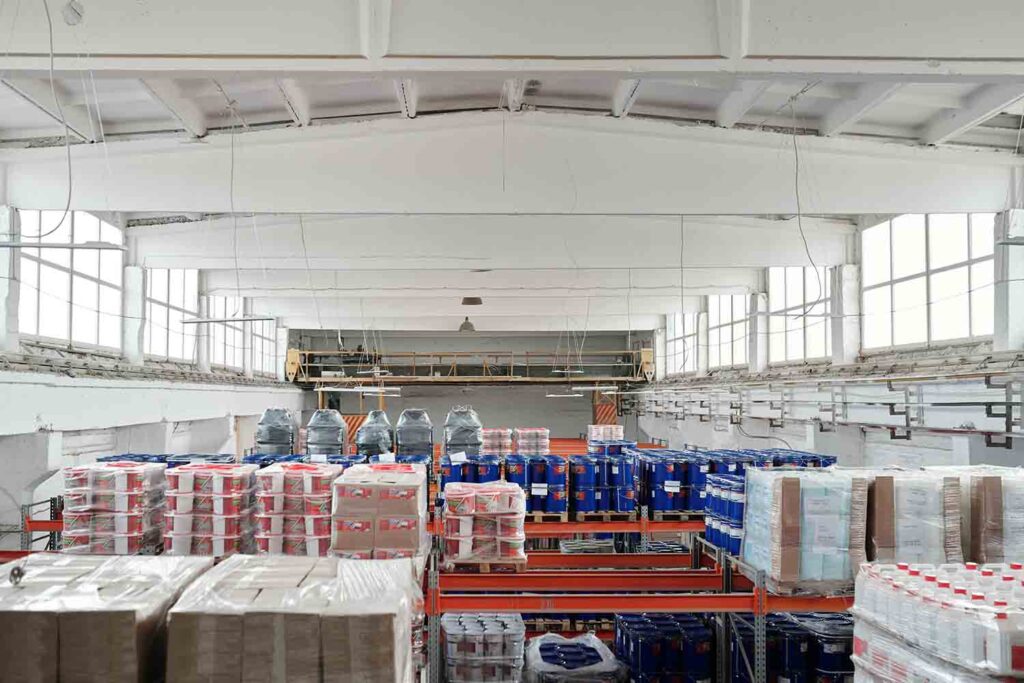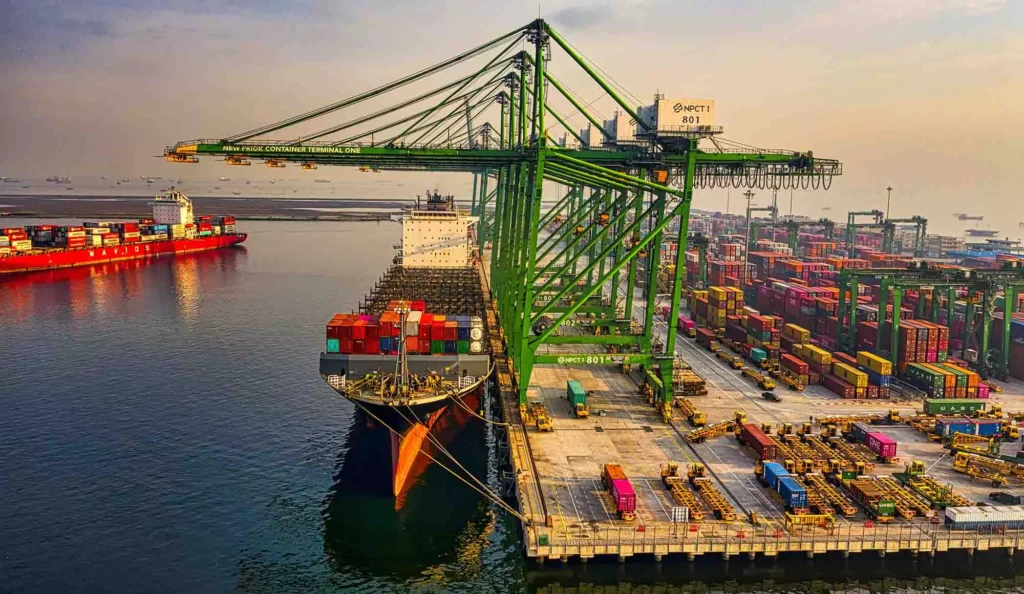Managing a supply chain can be one of the hardest parts of organizing any business, online or physical. In order to have an effective chain of operations, business owners need to understand how all components come together.
Most businesses’ supply chains involve many parts, from ordering, to packaging, delivering, and many steps in between. All parts of an operation work together to successfully complete orders, and ultimately, please customers. This harmony of processes is what allows any business to thrive.
This article will outline the steps of any supply chain, tips for creating an effective supply chain management system, and some options for optimizing your supply movement.
What are Supply Chain Operations?
In short, supply chain operations are the systems and processes in place that work together to move goods. From the time a customer places an order until the moment they receive it, the supply chain is in motion.
These operations are carried out by a handful of workers whom all play different roles. These steps are completed every time an order is made and must be optimized to be fast and efficient. From holding inventory to delivering the last mile, supply chains require heavy management.
Supply chains are crucial because they are essential to all businesses’ success. Even an amazing product that sells out won’t be successful without an operational supply chain. You have to be able to move products from start to finish, from the manufacturer to the customer, to make money. Without a proper supply chain in place, you’ll find it difficult to increase customer satisfaction or build a loyal base.
When a supply chain works well, customers feel like buying from you is easy. On the customer end, they want to find, purchase, and have a product within a few days. Waiting longer than this for a parcel to show up at their door greatly impacts their overall buying experience. Ease of buying can increase how likely a customer is to return to a store.
A proper supply chain can also save your business money and time. Ultimately, planning out how products are delivered to customers improves your bottom line and cuts costs associated with poor planning.
The Components of Supply Chain Operation
Although not every merchant is the same, there are common critical steps that find their way into most supply chains. Typically followed in sequential order, these steps are the most conventional for supply chain management.
1. Demand Planning
Demand planning is also known as forecasting. In a nutshell, you need to estimate how much you’ll be able to sell, and when. This is one of the most vital parts of the supply chain.
Demand planning requires you to forecast how many of each item you’re going to need. This allows you to predict exactly how much product you’ll need to order, hopefully without purchasing too much extra. This step is also reliant on the type of goods you sell. Time-sensitive goods need much better predictions since they’ll expire past a certain date. Other products can be held and sold for longer.
To plan for future demand, you’ll need to use historical data to analyze purchasing patterns. After knowing how well your goods sold in the past, and at what points they fluctuated, you can accurately plan. This is all part of preparing inventory and production in advance.

2. Purchasing
The next step in the supply chain is to purchase the items you need to sell to your customers. Whether these are raw materials you use to produce your own goods or items you sell under your brand, you need to bring them in.
Purchasing can be broken down into various steps. It typically begins with resourcing, sourcing, and assessing potential suppliers. This step includes negotiating price points set by suppliers and calculating your ratio of spending to earnings. You will also need to assess the number of raw materials you need to source your goods. This is all part of deciding whom to buy from, and what to buy.
Once you’ve decided on these factors, you will then need to finalize the purchasing agreement. This means your supplier needs to guarantee you the supplies you’re looking for and you buy them. To complete the purchasing part of the supply chain, the last step is to coordinate the delivery of the materials to your own warehouse or facility.
3. Manufacturing
Manufacturing refers to using the materials previously purchased and turning them into the products you want to sell.
This could look different for many merchants. On one hand, you might purchase raw materials from a supplier that you use to create your own products. This will require additional work to create your products before they’re ready to be sold.
On the other hand, you might purchase finished goods from third-party merchants. This takes away the step of needing to manufacture a product.
4. Inventory Management
The next step is to manage your current inventory. Inventory management refers to how businesses receive, store, and track their supply.
Inventory begins with a stock review. This means all items being held by a company are checked and accounted for. Businesses need to have a clear overview of exactly what products they have at a given time, so they know what they can sell.
Next, a business must also store the inventory so that it can be easily accessed later on. When a product is picked, it has to be in its purposeful location. Otherwise, the manual labour required to find the item is extended, and time is lost.
Inventory management is a continuous process that continues as items move around the supply chain. This allows real-time inventory levels to be tracked so that sure stock numbers are always known.
Nowadays, many businesses utilize an IMS, or inventory management software, to give them an updated view of their inventory. This optimization makes it faster and less costly to account for the product you currently have.
5. Fulfillment
Fulfillment comes into the supply chain process when a customer places an order. Up until this point, the items have been sitting in a warehouse waiting to be moved.
Fulfillment involves moving and processing items involved in each order. After these items are collected, they’re put into a box and sent to be delivered.
While some businesses have only one warehouse, larger enterprises have many locations spread out. Every fulfillment centre must be a part of the picking and packing process. To relate back to the last step, inventory should be updated per warehouse to see what’s available.
6. Transportation
Shipping and transportation refer to transferring packages from a warehouse to the end customer. This is also referred to as the last mile. The last mile of delivery is usually handled by a third-party logistics provider.
To make your transportation services as valuable as possible, you should include tracking options. Real-time tracking allows customers to see where the driver is. Notifications can also alert them about delivery updates as the parcel moves through the delivery process. Both of these include visibility throughout the last mile.
7. Customer Service
The final part of the supply chain is customer service and support. Even once customers receive their product, your part of the job isn’t yet complete.
Customer service operations refer to dealing with questions, complaints, refunds, returns, and anything else a customer might need after receiving their package. Typically, these can be carried out over the phone, via email, or through a live chat option.
Most customer service management takes place through CMS platforms that integrate with your other tools. These are easy to use and allow you to keep all customer queries in one place. Customer service can make or break a buyer’s experience, so this is something that should be prioritized.

How to Create a Supply Chain Management Strategy
With so many moving parts, it can sound daunting to set up a supply chain process. However, maintaining these operations is essential to the success of any business. Having these processes in place sets you up for victory and helps you avoid bumps along the way.
The safest way to go about it is to set standards to prevent problems before they happen. Using these procedures, you can easily keep your supply chain running smoothly.
Be Adaptable
Being adaptable is key to having a smooth supply chain. Supply chain directors should be able to react to unpredictable and unforeseeable events. Since changes are always happening, and demands are always changing, supply has to adapt as well.
Supply chain resilience refers to being able to create plans that work under different circumstances. Weather, global events, and time of year can all affect how much a company sells. Resilient supply chains can foresee these changes and be ready for when they occur. Or, in cases where changes can’t be predicted, be able to adapt and overcome.
Part of being adaptable means taking measures before changes occur. A backup supply can help prevent issues where it’s possible. Similarly, keeping extra suppliers on hand can be beneficial when more inventory is suddenly needed.
Be Aware of Trends
Trends are a major part of why demand changes for products so often.
With social media as one of the largest advertising tools, products blow up every day. This means some products might increase in demand overnight and drop off to a regular state just as quickly. By knowing what the public is looking for, you can predict how much supply you’re going to need.
There are many systems and automations available to help you manage your supply chain. Based on current trends, some generators can help you predict the sale of your product in the near future. Technology is a major component of supply chain management that can ease the process of predicting demand.
Always Communicate
Communication is key when it comes to managing many moving parts. Suppliers, merchants, stakeholders, and customers are part of the communication process that makes a company successful.
It’s important to clearly communicate your expectations to everyone you work with. This way, no one is left wondering where their items are.
Use FlashBox to Optimize the Last-Mile
The last mile of delivery is often where supply chain issues come into effect. Selling and delivering products requires strong management of inventory to know how many products are available, and where they are.
FlashBox uses cutting-edge technology to manage the last mile of logistics and deliver parcels to customers. By working with FlashBox, you remove the need to organize deliveries for your orders. As long as you have a firm grasp of your inventory numbers, you can sell as much as you want and have them to customers that same day.
FlashBox offers customers a unique tracking experience complete with real-time notifications, a live map view of drivers, and clear delivery windows. Plus, our professional customer support team takes care of delivery inquiries and customer concerns.
Working with FlashBox for same-day or next-day deliveries relieves stress and takes care of the end of the supply chain. A working supply chain makes selling easy.







